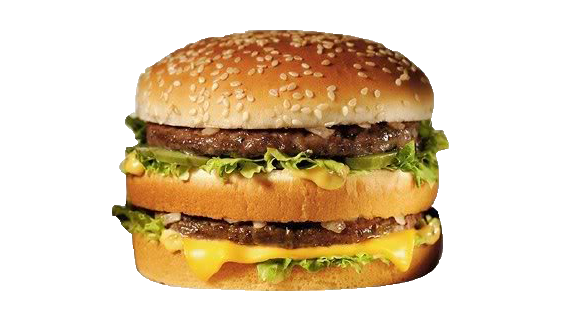

McDonald’s failed to prove genuine use regarding its EU Trademark ‘BIG MAC’
The Cancellation Division of the European Union Intellectual Property Office (EUIPO) surprisingly revoked the European Union Trademark ‘BIG MAC’ in its decision of 11 January 2019 (Cancellation No 14 788 C).

- Background of the case
Irish restaurant chain Supermac’s filed a request for revocation of McDonald's EU trademark (EUTM) registration No 62638 ‘BIG MAC’ (word mark) in its entirety. The applicant claimed that the mark would have not been put to genuine use in the EU for a continuous period of 5 years, as set out in the Article 58(1)(a) of the EU Trade Mark Regulation.
The Cancellation Division delivered its decision on 11 January 2019.
- The decision of the Cancellation Division
The Cancellation Division started by noting that in revocation proceedings based on the grounds of non-use, the burden of proof lies with the EUTM proprietor. The applicant cannot be expected to prove a negative fact, namely that the mark has not been used. Therefore, it is the EUTM proprietor who must prove genuine use within the EU. The proof of use must establish the place, time, extent and nature of use of the trademark.
McDonald’s had submitted evidence as proof of use, namely:
- 3 affidavits, signed by representatives of McDonald’s companies
- Brochures and printouts of advertising posters, packaging for sandwiches
- Printouts from the McDonald’s websites
- A printout from Wikipedia providing information on McDonald's ‘Big Mac’ hamburger
According to the Cancellation Division, the probative value of affidavits depends on whether or not they are supported by other types of evidence (labels, packaging, etc.) or evidence originating from independent sources. In general, statements drawn up by the interested parties themselves or their employees are given less weight than independent evidence, as the perceptions of a party involved in a dispute may be more or less affected by its personal interests in the matter.
Turning to the evaluation of promotional brochures, packaging and printouts from the McDonald’s websites, the Cancellation Division noted that all of the provided evidence originated from the EUTM proprietor itself. Furthermore, the mere presence of a trademark on a website is insufficient to prove genuine use unless the website also shows the place, time and extent of use or unless this information is otherwise provided. However, McDonald’s had not provided any records relating to internet traffic or the countries from which the web page has been accessed. The Cancellation Division held that connection between McDonald’s websites and the potential number of items offered and possibly sold could not be established.
The EUTM proprietor (McDonald’s) did not provide any information on how the distributed brochures were circulated, who they were offered to and whether they have led to any potential or actual purchases. Regarding the packaging, there was no information on how many of the products for which the packaging was used were actually offered for sale or sold. The Cancellation Division concluded that McDonald’s failed to prove the extent of use, as the materials did not give any data for the real commercial presence of the EUTM for any of the relevant goods or services. Lastly, the Cancellation Division noted that the printout from Wikipedia could not be considered as a reliable source of information, as anyone can amend Wikipedia entries.
In light of the above-mentioned examination, the Cancellation Division found that the evidence provided by McDonald’s was insufficient to establish genuine use of the BIG MAC -trademark. Therefore, it revoked the trademark in its entirety.
- Remarks
The decision is not yet final, as McDonald’s can - and most probably will - lodge an appeal against the Cancellation Division decision before the EUIPO Board of Appeal.
This decision is a good reminder for trademark owners of the importance of collecting relevant proof of use. Here are some tips for collecting evidence of trademark use:
- Read the instructions thoroughly. The EUIPO provides important information regarding proof of use in its Guidelines for examination of EU trademarks. It explains how to establish place, time, extent and nature of use with examples from the case law.
- Compile the materials regarding the use always as diligently and completely as possible. This is the case even if the use of the marks would seem self-evident for the trademark proprietor. As seen in the BIG MAC-case, the EUIPO cannot take into account any facts that are not presented to it.
- Make it a habit. Collecting proof of use might seem as a burden, but proving genuine use of the trademark requires systematic work. Document regularly inter alia excerpts from sales tables, invoices, orders and order confirmations, advertising material and mentioning of the mark by third parties (e.g. in the press). By doing that, you can collect all the relevant material without much effort in a timely manner when a trademark dispute escalates.
Related
- 1 December 2017: Madrid Monitor takes its place as the one and only tool for tracking international trademarks
- 1 January 2020 - Changes in Classifications - Trademarks, Designs, Patents and Utility Models
- 100th Anniversary of Bavaria (Germany) - A glance at trademarks, start-ups, innovation & events
- 10th Anniversary Edition - 10 Things to Know about LexDellmeier - Past, Present & Future
- 15 Years LexDellmeier - 2024 New Year Wishes
- 2024 World IP Day - Building Our Common Future with Innovation and Creativity
- A guide for influencers, Part 1: Protecting your own intellectual property
- A guide for influencers, Part 2: Minding the intellectual property of others
- A new legal EU framework regulating Artificial Intelligence
- All these small Gimmicks – Trademark Infringement?
